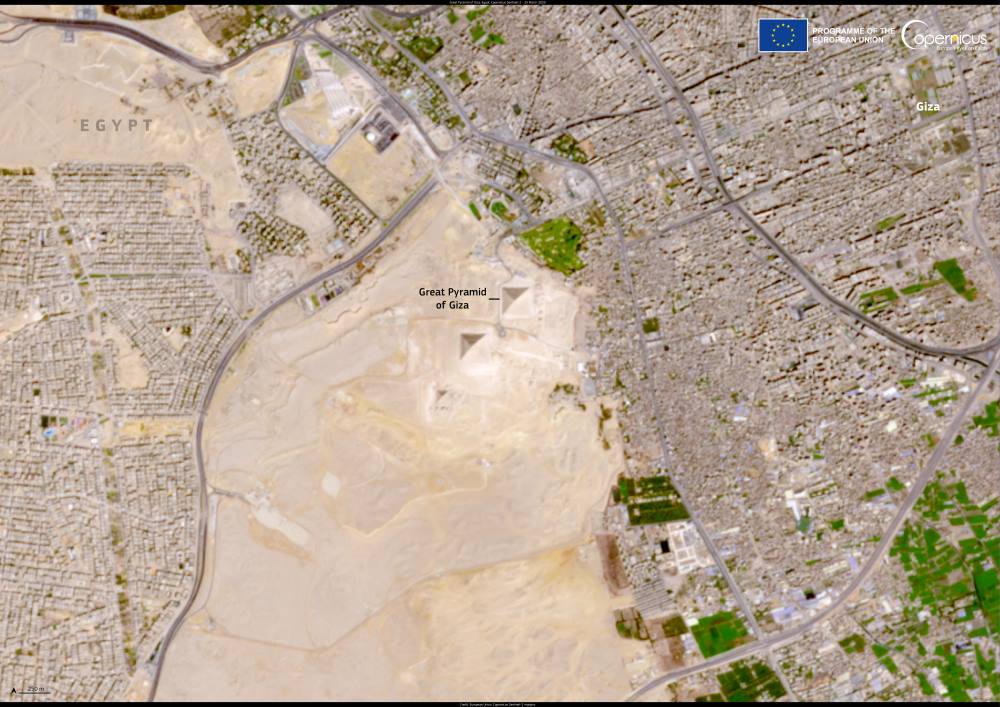Rising from the edge of the Sahara Desert, the Giza Plateau holds some of humanity’s most enduring monuments. Situated on the western fringes of Greater Cairo, this archaeological site has stood for more than 4,500 years, preserving the grandeur of Egypt’s Old Kingdom. Its three main pyramids – built for the pharaohs Khufu, Khafre, and Menkaure – dominate the landscape, accompanied by smaller satellite pyramids, temples, causeways, and the enigmatic Great Sphinx.
The Great Pyramid of Khufu, the largest of the trio, was originally over 146 meters high, constructed from an estimated 2.3 million limestone blocks. It remains the only surviving member of the Seven Wonders of the Ancient World, a testament to the engineering precision and organizational skill of ancient Egyptian society. Nearby, the Pyramid of Khafre retains traces of its original casing stones at the summit, while the smaller Pyramid of Menkaure is distinguished by its lower courses of granite.
The Great Sphinx, carved directly from the bedrock, lies to the east of Khafre’s pyramid. Measuring 73 meters in length and 20 meters in height, it combines the body of a lion with a human head – widely believed to bear the likeness of Khafre himself. Over the centuries, windblown sand and weathering have eroded its limestone surface, prompting repeated conservation efforts. Its location on the edge of the plateau exposes it to both desert conditions and urban influences from the rapidly expanding city nearby.

This Copernicus Sentinel-2 image, captured on 25 March 2025, shows the Giza Plateau’s monuments in sharp contrast against the surrounding desert and the dense cityscape of modern Giza. The pyramids appear as perfect geometric forms casting long shadows, aligned along a southwest–northeast axis. From space, their placement relative to the Nile floodplain is clear, illustrating the ancient builders’ choice of a site elevated above seasonal floods yet within reach of the river’s resources. The Nile once played a crucial role in supplying construction materials and supporting the workforce, but today its flow and flood patterns are influenced by both human management and regional climate shifts, which can also affect the plateau’s microenvironment.
Modern environmental monitoring has revealed that climate-related factors increasingly affect the site’s preservation. Changes in temperature, humidity, and rainfall patterns can accelerate the weathering of limestone. More intense heatwaves contribute to thermal stress in stone structures, while occasional heavy rains – although rare in this arid region – can cause damaging runoff and promote salt crystallization within the porous rock. Combined with urban air pollution, these processes gradually weaken the monuments’ surfaces.
Satellite observations, such as those from Copernicus, provide an unobtrusive means of tracking these threats over time. Data can detect shifts in surrounding land use, highlight encroachment from urban growth, and even help identify areas where groundwater changes might impact the structural stability of monuments. Such insights guide protective measures, ensuring that conservation efforts can be both targeted and timely.
The Giza Plateau’s significance extends far beyond Egypt’s borders. It stands as a symbol of ancient achievement, attracting millions of visitors each year and inspiring research across disciplines – from archaeology and architecture to climate science and cultural heritage management. Seen from above, its enduring geometry tells a story not only of the past but also of the continuing challenge to preserve it in a changing environment.
Featured image credit: European Union, Copernicus Sentinel-2 imagery



